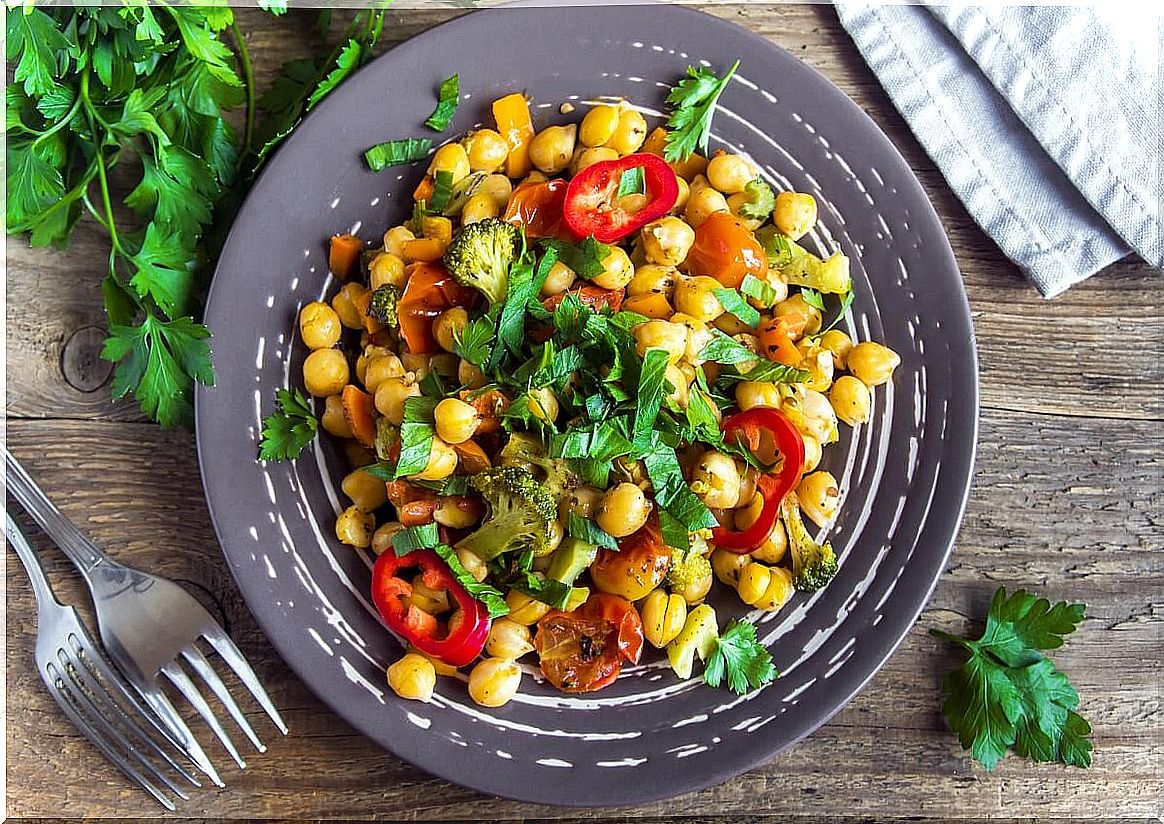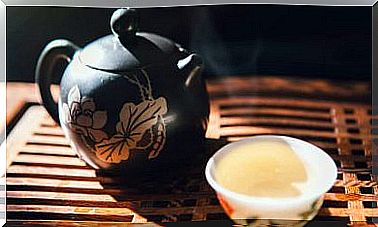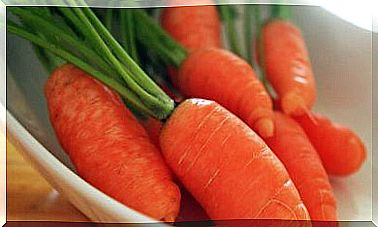What Are Pranic Foods?

Positive pranic foods activate people’s vital energy, while negative pranic foods have the ability to extinguish the vital forces. In the middle are the neutrals, which have no effect in any direction.
This is a classification based on the culture and practice of yoga in India, where food is consumed to nourish the body, soul and mind. Are you interested in finding out more about this? Next, we’ll tell you all the details about this eating practice.
Prana, pranic diet and food
In Sanskrit the word prana means “primary energy”, and is sometimes also translated as “breath”, “vital force”, “consciousness energy” or “original creative power”. In reality, it has many meanings and is difficult to describe.
Prana is life support and is obtained from breathing, air, sunlight and food. All of these processes are essential for cells to nourish, grow and renew normally. Not surprisingly, in most Indian dialects, death is known as the prana that leaves the physical body.
The way to eat according to yogic practice is just one more way of taking care of the body, mind and soul. Food is not valued for its macronutrients or the calories it provides, but for how it affects and modifies this vital energy.
Diet is another link within the holistic approach to health that is ayurveda . This is one of the traditional medicines in India, where it has official status. Any illness or imbalance is treated through food, plants, oils and following certain physical and meditation practices.
Classification of pranic foods
As we mentioned, in this diet foods are evaluated by how they affect prana or vital energy. So there are positives, neutrals and negatives.
At the moment, the author or authors of these classifications and the general concept of this diet are unknown. Still, there are similarities with Ayurvedic and yogic practices. Both yoga and ayurveda have very ancient texts that describe the best way to eat for optimal health.
positive pranic foods
Positive pranic foods are foods that provide vital energy to the body. It’s not just a list of specific foods, but it also includes the fact that they’re organic, fresh, locally grown, seasonal, wholegrain and lightly processed. Among them, the following stand out:
- Fruits and vegetables: almost all, except tomato, eggplant, garlic and onion.
- Whole grains: millet, rice, oats, barley, buckwheat and teff. They are considered foods of excellent nutritional value.
- Legumes: lentils, yellow peas, all kinds of beans, chickpeas, tofu.
- Seeds and oilseeds: chia, hemp, sesame, linseed and pumpkin seeds, as well as pine nuts, walnuts, pecan and peanuts.
- Ghee, coconut oil, palm oil and sesame.
- Honey.
Furthermore, the way in which food is prepared and consumed is highly valued. This is because some processes subtract or add prana . For example, raw and fresh foods have more pranic energy than cooked foods. In the latter case, it is best to cook immediately before eating and in the shortest possible time.
Oilseeds and seeds should be eaten raw and, if possible, after they have been soaked. Furthermore, in the case of whole grains and legumes, it is preferable to germinate or allow to soak before cooking.

negative food
In this group are all substances with sedative and stimulant activity. When ingested, they provide components that steal or extract prana, in addition to promoting a state of nervousness, mental restlessness, dullness of consciousness, and long-term lack of energy.
Among them are the following options:
- Drinks like coffee, tea or alcohol.
- Garlic, onion, leeks and eggplant.
- Peppers in general and asafoetida (a spicy plant widely used in the preparation of chutneys ).
Fish, meat and eggs are also present in this group. However, some sources consider that they are not as harmful if ingested once in a while, and never in raw form.
Food classified as neutral
Only tomatoes and potatoes are in this group. In principle, they do not act on vital energy, but in some cases a feeling of lethargy may arise after consumption.
What does science say about the pranic diet?
At the moment, there are no studies that evaluate the possible positive health effects after adopting the pranic diet. However, its base is composed of fruits, vegetables, whole grains, legumes, oilseeds and oil. These foods are considered healthy and there is evidence of their benefits.
A diet rich in vegetables, fiber, healthy fats and whole foods has been linked to a lower risk of chronic disease. This includes ischemic heart disease, type 2 diabetes, hypertension, obesity and certain types of cancer.
In addition, this diet also highlights the quality of these products, their cultivation, their proximity and the way to prepare them. It also values the way we eat them, as this should be slow, without pause, as long as we are hungry and the previous meal has been digested.
With regard to foods considered negative, there is scientific evidence on the importance of reducing the consumption of red and processed meats, and also on the negative effects that processed foods and foods with added sugar have on the body.
The other components of this group, such as fish, nightshades, garlic, onion and pepper have beneficial nutrients and pigments. Therefore, with some exceptions, they can be part of a healthy and balanced diet. However, it is not possible to assess its consequences on vital energy beyond personal experiences.

Positive pranic foods are healthy and can form the basis of your daily diet
The originators and origins of the pranic diet are unknown. However, it can be said that its practice is closely linked to yoga and ayurveda, two disciplines with a lot of tradition that aim to enhance physical, mental and spiritual well-being.
Their recommended foods take place in a healthy, balanced diet for anyone. Today there are many specialists and eating plans that promote the intake of vegetables, fruits, pulses, whole foods, lean proteins and healthy fats.
In addition, moderate consumption of eggs, fish, meat and dairy products is also positive, as long as they are well tolerated. Of course, it must be remembered that any dietary model must go hand in hand with healthy habits to bring about real change in health.








